Water News Network Top 3 Stories of 2019
The Water News Network’s top three stories of 2019 reflect the San Diego region’s interest in water conservation, sustainable landscaping, and successful efforts to diversify water supply sources.
The Water News Network’s top three stories of 2019 reflect the San Diego region’s interest in water conservation, sustainable landscaping, and successful efforts to diversify water supply sources.
The Water News Network’s top three stories of 2019 reflect the San Diego region’s interest in water conservation, sustainable landscaping, and successful efforts to diversify water supply sources.
Colorful art created by elementary school students communicated the importance of saving water. This was the most viewed story of 2019.
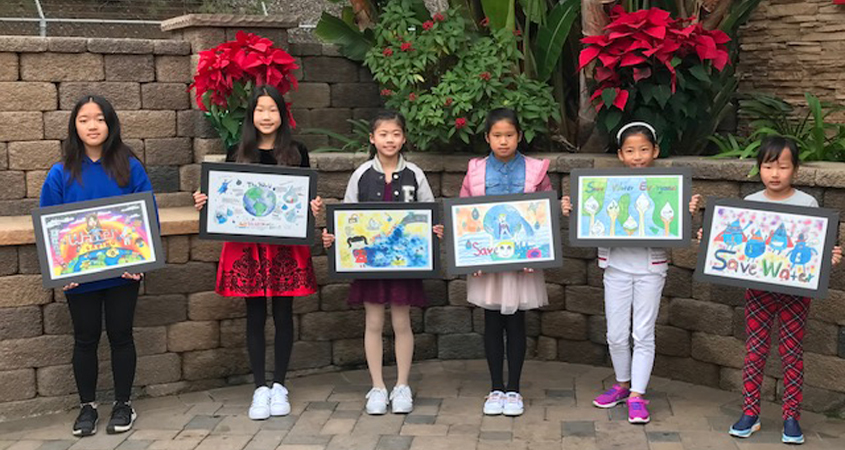
January 13, 2019
Eighteen talented San Diego, Coronado and Imperial Beach elementary school students used their artistic skills to communicate the importance of water conservation in the City of San Diego’s Public Utilities Department 18th annual Kids Poster Contest. Winning entries in the contest are featured in the 2019 Water Conservation Calendar, which debuts this month.
“The City of San Diego’s Public Utilities Department is proud to sponsor the yearly Kids Poster Contest,” said Brian Hojnacki, a supervising management analyst for city utilities. “It allows us to involve first to sixth graders through art while learning and thinking about water conservation in our region. It’s a win-win for us all.”
The theme “How Am I A Water Conservation Hero?” asked students to imagine themselves saving water from being wasted. They could draw, paint, color, cut and paste original artwork depicting one important message about water conservation.

People living in the San Diego region continue to take advantage of rebate opportunities that encourage sustainability. A program that provided incentives to remove grass and replace it with sustainable landscaping proved popular in the spring. The Water News Network story about the rebates was also popular and the second-most read story of 2019.
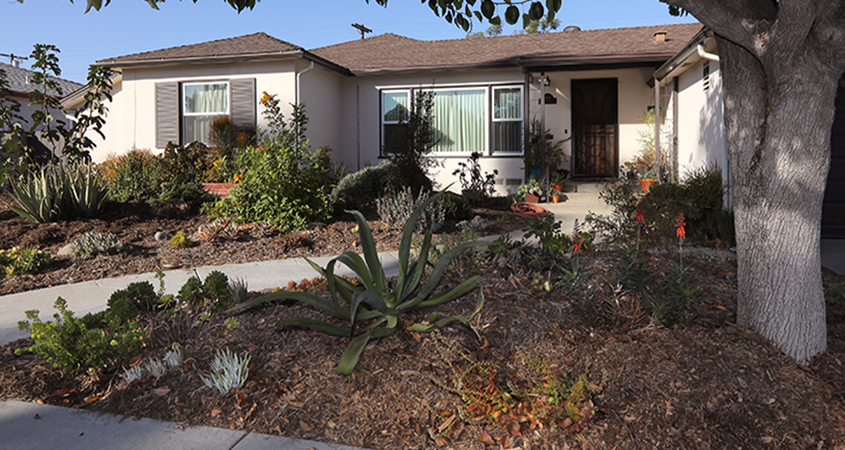
April 8, 2019
Removing grass can generate rebates of at least $2 per square foot for San Diego residents under new enhanced incentives that started this month.
As of April 1, the Metropolitan Water District is offering $2 per square foot for every square foot of grass removed from yards and replaced with sustainable landscaping.
“San Diego County homeowners and businesses know that sustainable landscapes are key to water reliability in our region,” said Joni German, who manages the Water Authority’s WaterSmart Landscape Makeover Program. “With the help of local landscape architects and designers, our WaterSmart Landscape Makeover Program gives them the knowledge and skills they need to be successful. WaterSmart landscapes are an upgrade, not a compromise.”
The San Diego County Water Authority sustains a $245 billion regional economy and the quality of life for 3.3 million residents through a multi-decade water supply diversification plan, major infrastructure investments and forward-thinking policies that promote fiscal and environmental responsibility.
California officials toured some of that infrastructure in July as they worked to prepare a water resilience portfolio for the state. Our reporting on the July 18 water portfolio tour was the third most read story of 2019 on the Water News Network.

During the water portfolio tour, state officials got a first-hand look at infrastructure, including the San Vicente Reservoir, Olivenhain Reservoir, and the Claude “Bud” Lewis Carlsbad Desalination Plant. Photo: Water Authority
July 18, 2019
State officials Thursday toured San Diego County water infrastructure to get a first-hand look at the region’s successful water portfolio approach for supply diversification.
California Natural Resources Agency Secretary Wade Crowfoot, Deputy Natural Resources Secretary Thomas Gibson, State Department of Food and Agriculture Secretary Karen Ross, and State Water Resources Board Chair E. Joaquin Esquivel were here to assess the region’s water projects as part of their new role in developing a water portfolio strategy for the state.
“San Diego has been a leader in the water portfolio approach,” said Wade Crowfoot. “We have to make the investments to build regional water resilience as part of the Governor’s order to develop a portfolio to manage water in California.”

After a dry spell, the first rainfall is the most important water to capture for your landscape. This is called the “first flush.”
In arid regions like San Diego County, this happens every year because there is a long stretch of dry weather in between rainy seasons.
It washes away pollutants that have collected since the last rain. This water needs to be filtered as much as possible by landscaping before it goes anywhere else. Usually the next stop for this water is storm drains that empty into oceans. So your landscape can be a very important tool in preventing the buildup of pollutants in local water supplies.
In addition, the first rain in the fall is very important for your plants. New or established plants will want to grow deep roots in the fall and winter, and the additional water is essential. Capturing the rain with your landscape reduces the need for increasing irrigation.
Measure the size of your roof to determine how much water will come off it. The shape of your roof doesn’t matter in this instance. The same amount of water falls on the roof whether it is sloped or flat. You can measure a sloped roof either using an aerial view or from the ground without worrying about the slope itself. Just measure the outside edges the same way you would if it was flat and calculate the square footage.
Flat roofs covering a building in one contiguous shape are easier to measure. Some roofs are more complicated. You can divide this type of roof into individual squares or triangles. Then, measure each one at a time and add the figures together for your total roof area.
Once you know the total roof area, you can determine the amount of rainfall it generates in gallons, then use the following formula to convert square feet to gallons.
Formula: Rainfall in Inches x Total Square Feet x 0.62 = Gallons of Rainwater from the Roof
Here’s an example using a 1,000 square foot roof: 1 inch of rain x 1000 x 0.62 = 620 gallons.
Even in a dry climate, this rainfall adds up to a lot of water runoff. It’s easy to see how important it is to save as much of this water as possible in a landscape designed to be a sponge instead of a brick. Take the watershed approach to designing your landscape, and you can use the first flush of rain to your advantage.
The San Diego County Water Authority and its partners also offer other resources for landscaping upgrades, including free WaterSmart classes at WaterSmartSD.org.
California’s water policy can be complex, and—let’s be honest—often polarizing.
Water decisions frequently get distilled into unhelpful narratives of fish versus farms, north versus south, or urban versus rural. Climate change-driven droughts and flooding threats, as well as our divided political climate, compound these challenges.
We must rise above these historic conflicts by finding ways to protect our environment and build water security for communities and agriculture. We need to embrace decisions that benefit our entire state. Simply put, we have to become much more innovative, collaborative and adaptive.
Twenty years ago, people who saw a need to help people conserve water and preserve San Diego’s environment conceived the idea for a demonstration garden.
The Water Conservation Garden celebrates its 20th-anniversary Saturday, November 16 at 5 p.m. with a benefit concert featuring food and drink stations, dancing, auction items and live music provided by The Mighty Untouchables. More information and tickets are available on The Garden’s website.
Native San Diegan Jon Foreman of the Grammy-award winning band Switchfoot is among The Garden’s newest fans after a recent visit.
“It has been an amazing journey,” said CEO Jennifer Pillsbury. “We run six acres with educational exhibits for the public, but we also have a huge education program for the public. Last year we had 42,000 visitors and reached 88,000 kids. When we first opened, we were excited about 1,000 visitors.”
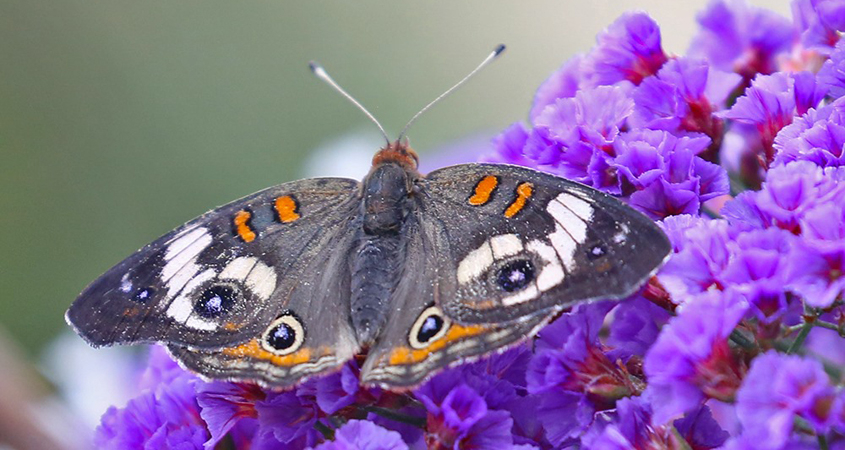
The annual Spring Garden and Butterfly Festival is among The Garden’s most popular annual events. Photo: The Water Conservation Garden
A task force of water agencies and municipalities conceived The Garden in response to six years of drought in San Diego County.
Otay Water District, Helix Water District, and Cuyamaca College kick-started the effort in 1990. By 1992, the San Diego County Water Authority, City of San Diego, and Padre Municipal Water District joined the effort, forming the original Water Conservation Authority.
The following year, the Grossmont-Cuyamaca Community College District approved the establishment of a 4.5-acre Water Conservation Garden adjacent to Cuyamaca College. With $700,000 in donated services, products, and labor from local nurseries and members of the California Landscape Contractors Association, the Water Conservation Garden came to life. San Diego County Supervisor Dianne Jacob presided over its grand opening in May 1999.
Over the past 20 years, The Garden has added its popular children’s exhibits, bird and butterfly gardens, the Dorcus Utter Memorial Sensory Garden, and the Dorcus Butterfly Pavilion.
“The Garden is here to inspire everyone to use all natural resources efficiently, not just water,” said Pillsbury. “When people see proper irrigation and the right plants in the right location with the right soil, having everything working together can be beautiful and efficient.”
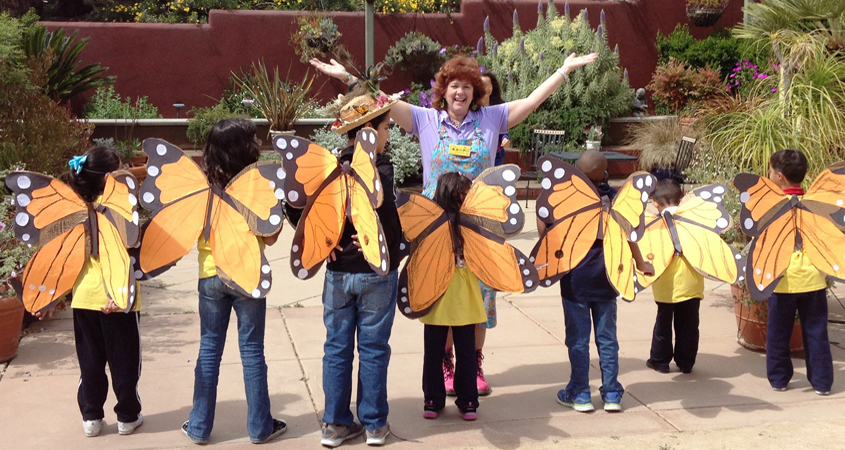
Pam Meisner, also known as Ms. Smarty-Plants, started the conservation program in 2008 at the Water Conservation Garden. Photo: The Water Conservation Garden
The Water Conservation Garden has been governed as an independent nonprofit organization under its own Board of Directors since 2011. Memberships, donations, grants, facility rentals, gift shop sales, and water district dues fund operations.
With additional land donated by Cuyamaca College, The Water Conservation Garden now covers six acres of displays showcasing water conservation through its themed demonstration gardens and how-to displays on mulch and irrigation.
Students in the Cuyamaca College Ornamental Horticulture program benefit from hands-on education just steps away from their classrooms.
“Students come through and learn plant identification and experience lab learning,” said Pillsbury.
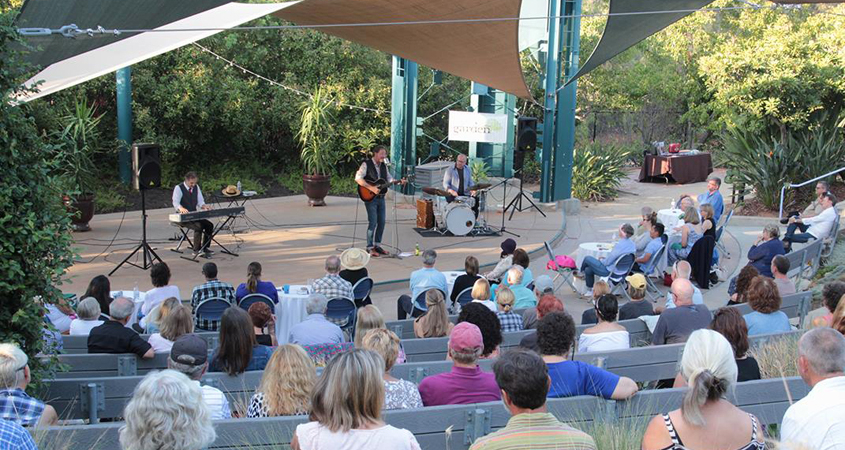
The Garden’s amphitheater seats 300 and will host its 20th-anniversary benefit concert on Nov. 16. Photo: The Water Conservation Garden
The Garden will open a new smart classroom available for business retreats, meetings, and seminars. Pillsbury also hopes to book more events in the 300-seat amphitheater.
Through its evolution and innovation, the mission of The Water Conservation Garden remains the same as it did on its opening day 20 years ago: to inspire positive change in the living environment through water conservation and the protection of natural resources.
“We’re here to educate the community on efficient water use, but we also want to be a spot where people can come learn and explore together in so many ways,” said Pillsbury.
Admission to The Garden is free. Docent-led tours take place on the first Saturday of each month at 10 a.m.
The rainy season is coming, but you still have time to get a discounted rain barrel to “harvest” the upcoming rains, cut your watering costs and protect local beaches by reducing pollution. Through Oct. 13, County residents can get a discounted, top-of-the-line, $90 Ivy rain barrel — a cost that could shrink to as little as $25 — by ordering one online, thanks to San Diego County’s Watershed Protection Program and the nonprofit Solana Center.
Dust off your windshield wipers, L.A. The first rain of the season dripped from the skies Thursday morning, sprinkling morning commuters.
Extreme fire warnings across California have officially expired, thanks to a slight chance of light rain through Saturday, with low clouds and much cooler temperatures than in the last few days, said Tom Fisher, a meteorologist with the National Weather Service in Oxnard.
Encinitas, Calif. —Olivenhain Municipal Water District is offering a Basics of Backyard Composting and Vermicomposting workshop to the general public to promote water use efficiency. OMWD will hold the free workshop on Tuesday, October 8 from 5:30 p.m. to 7:30 p.m. at Elfin Forest Recreational Reserve’s Interpretive Center Honoring Susan. J. Varty.
A new plan recommends four strategies to advance water reuse in California over the next three decades – an important part of both the state and regional water resilience portfolio.
The California WateReuse Action Plan includes a comprehensive set of proposed actions that will more than double the use of water recycling in California and help prepare the state for the impacts of climate change, according to WateReuse California, which released the plan in July.
But getting to that goal will require several steps, including: Completing research to advance water recycling and potable reuse; developing and streamlining recycled water regulations and permitting; increasing grant and loan opportunities to expand recycled water infrastructure; and, implementing integrated regional planning.
The U.S. EPA is developing a similar plan to advance water reuse nationwide.
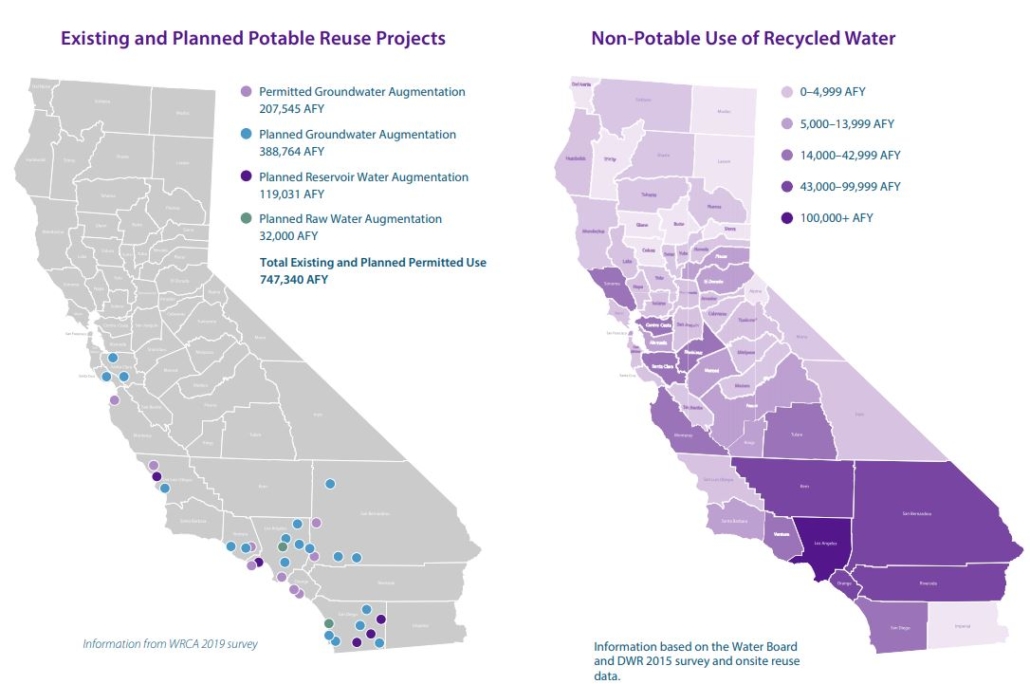
The California WateReuse Action Plan recommends strategies for increasing water recycling statewide. Graphic: WateReuse California
Recycled water is expected to be the next major source of local water supply for the San Diego region – and the region has a long history of working together toward that goal.
The San Diego County Water Authority collaborated with its member agencies to provide feedback on the plan’s development.
“We appreciate how this new plan aims to increase water supply diversification, including recycled water,” said Lesley Dobalian, principal water resources specialist with the Water Authority, and a contributor to the final action plan.
“Within the next 15 years, potable reuse and recycled water is projected to make up more than a quarter of San Diego County’s supply, but reaching our potential will depend in part on statewide implementation of the plan’s key findings,” Dobalian said.
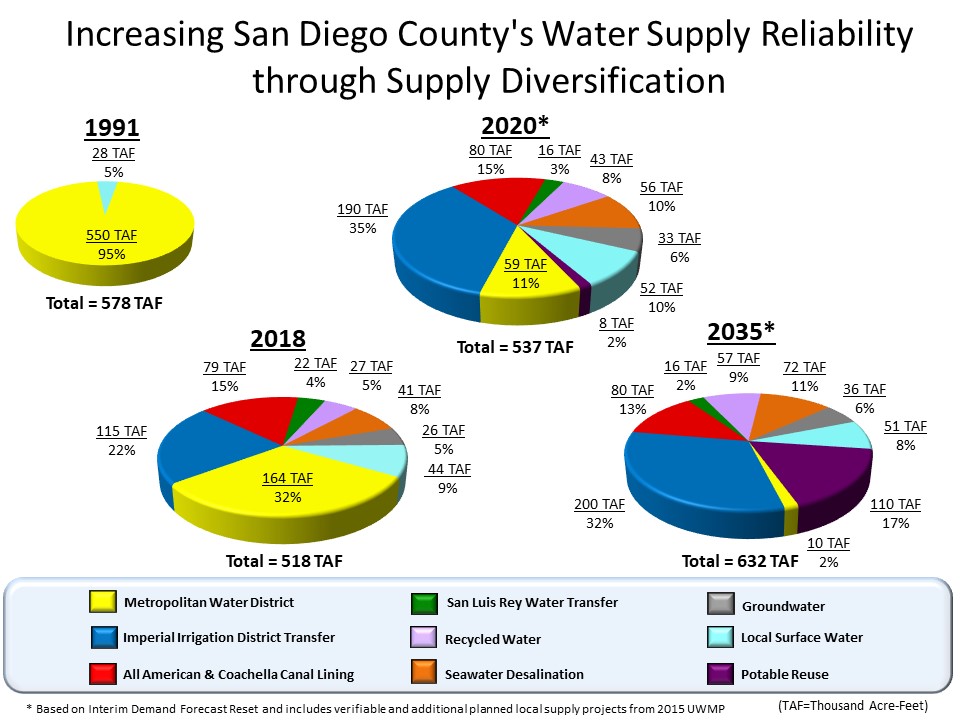
Recycled water and potable reuse are forecast to make up 26% of San Diego County’s water supply by 2035. Graphic: San Diego County Water Authority
In July, the Water Authority Board endorsed Governor Gavin Newsom’s Executive Order N-10-19, directing development of a water resilience portfolio approach that meets the needs of California through the 21st century.
On July 18, state officials toured San Diego County water infrastructure to see the region’s successful water portfolio approach for supply diversification, as they work to create the statewide water resilience portfolio.
In San Diego County, several agencies are developing or expanding water recycling plans, including the City of San Diego, Padre Dam Municipal Water District, Helix Water District, the City of Oceanside, and several additional projects in North County.
At the national level, EPA is also developing a Water Reuse Action Plan, or WRAP, to advance water reuse. The Water Authority met with its member agencies and submitted comments to the U.S. EPA for the WRAP.
A draft WRAP is expected to be released by the federal agency at the national WateReuse Association Symposium September 8-11 in San Diego.
“California is widely recognized as a national and world leader in water recycling,” according to the California WateReuse Action Plan. “Recycled water supplies offset approximately 9% of the state’s urban water demands and agricultural reuse provides reliable water supplies for farmers throughout the state.”

The U.S. EPA plans to release a draft Water Reuse Action Plan to advance water reuse, at the national WateReuse Association Symposium September 8-10 in San Diego.
Six talented elementary school students were recognized on August 7 by the Otay Water District Board of Directors as the winners of the District’s “Water is Life” Student Poster Contest.
As one of the Otay Water District’s educational programs, the contest offers an opportunity for students to showcase their creativity while reflecting on the importance of using water efficiently in their daily lives. Students were encouraged to illustrate the value of water used both inside and outside the home as an informational poster intended to educate others.
“We’re proud to offer students this opportunity to have fun and be creative, while at the same time thinking and learning about water conservation,” said Otay Water District General Manager Mark Watton.
More than 245 students from 10 different schools in the District’s service area submitted entries. The District judged the entries based on categories in two grade categories: kindergarten through third grade, and fourth through sixth grade. First, second and third prize winners were chosen from each category.
Winners received an award certificate, gift card, art kit, and a goodie bag filled with District promotional items. The lucky first place winners in each category also received a pizza party for their entire class.
The six posters winners were submitted by students in the Chula Vista Elementary School District.
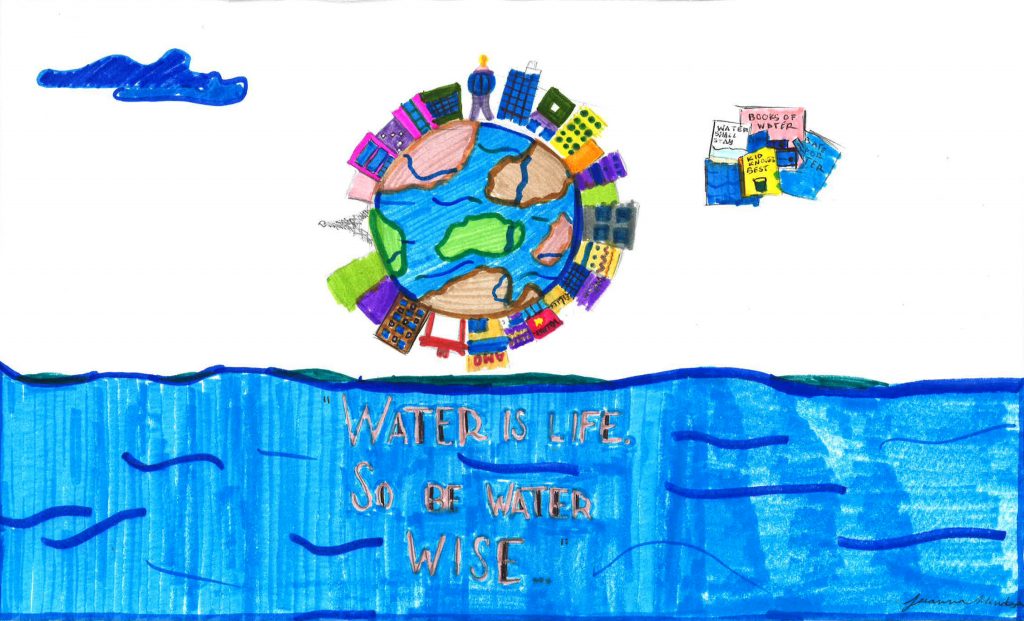
Jeeanna Mendoza, Grade 3, Camarena Elementary School (first place; K-3). Photo: Otay Water District

Amerie Constantino, Grade 1, Wolf Canyon Elementary School (second place; K-3). Photo: Otay Water District

Miguel-Angel Gonzalez, Grade 2, Wolf Canyon Elementary School (third place; K -3). Photo: Otay Water District

Maya Santana, Grade 5, Wolf Canyon Elementary School (first place; 4-6). Photo: Otay Water District

Malayiah Williams, Grade 5, Wolf Canyon Elementary School (Second Place; 4-6). Photo: Otay Water District
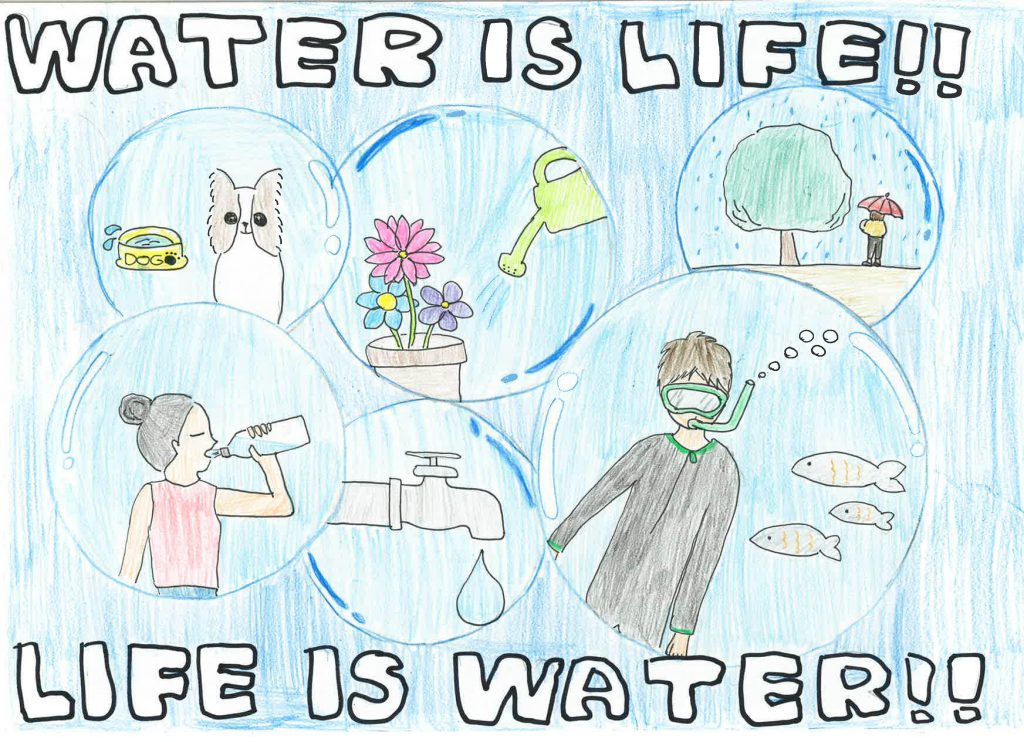
Rin Smith, Grade 5, Wolf Canyon Elementary School (Third Place; 4-6). Photo: Otay Water District
In addition, according to the Metropolitan Water District of Southern California’s 2020 Student Art Calendar Contest rules, the District submitted five of the six winning posters to MWD’s contest. MWD will select 36 posters from its overall regional entries to be displayed in its 2020 “Water is Life” calendar. The winners will be honored at a student art exhibit and recognition event in December.
To learn more about the Otay Water District’s “Water is Life” Student Poster Contest, go to otaywater.gov/education.